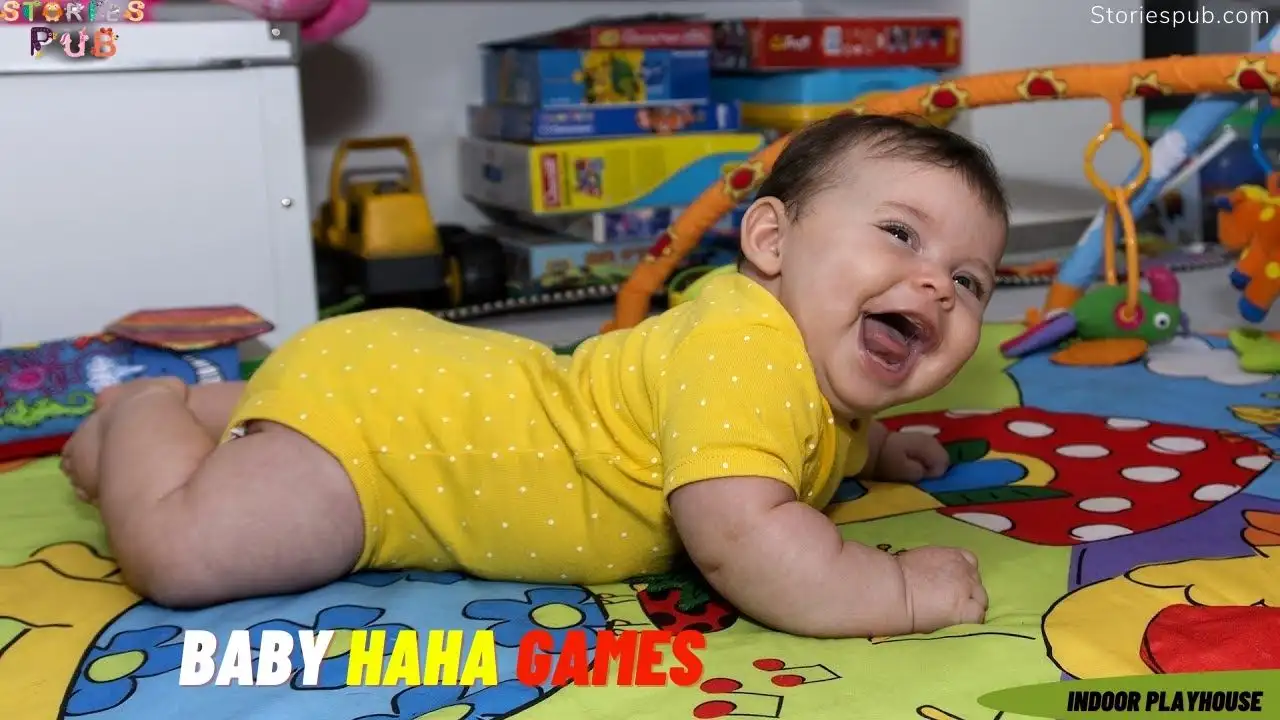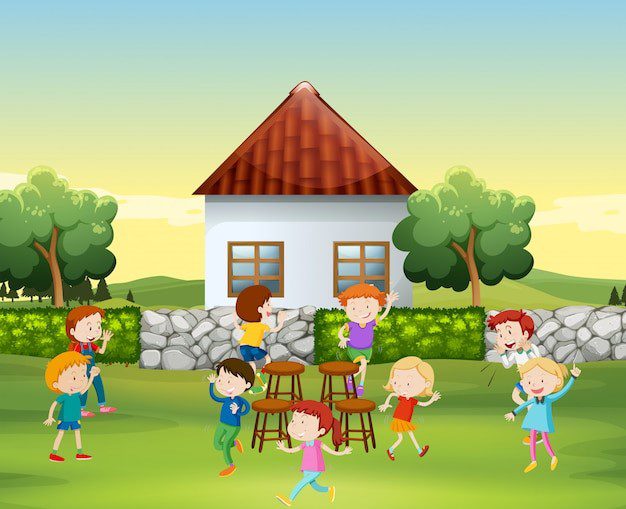Summarize this Article with:
Empowering Parents: Proven Strategies to Help Kids Cope with Anxiety

Are you a concerned parent wondering how to help your child conquer anxiety and build resilience? In today’s fast-paced world, childhood anxiety has become a prevalent concern, impacting countless young lives.
But fear not, because in this guide, we’ll explore practical strategies, focusing on “helping children cope with anxiety,“ to equip you with the tools needed to navigate this journey alongside your child. From understanding the signs of anxiety to nurturing a supportive family environment and teaching essential coping skills, we’ll delve into actionable steps to empower your child and strengthen their emotional well-being.
So, let’s embark on this journey together, discovering how to be your child’s best ally in conquering anxiety and fostering resilience, all while keeping things clear and straightforward!
Understanding Childhood Anxiety
Childhood anxiety can manifest in various ways, and it’s important for parents to recognize and understand these signs. Here’s a detailed look at the different aspects of understanding childhood anxiety:
Physical Symptoms: Anxiety in children can often present itself through physical symptoms. These may include frequent stomachaches, headaches, or even nausea. These physical complaints can be confusing for parents because they may not have an obvious medical cause. However, they can be indicators of underlying anxiety.
Behavioral Changes: Anxiety can also cause significant changes in a child’s behavior. They might become more withdrawn and reserved, avoiding social interactions or activities they previously enjoyed. Increased irritability and mood swings are common signs as well. Children may also cling to their parents more than usual, seeking comfort and reassurance.
Sleep Disturbances: Anxiety can disrupt a child’s sleep patterns. They may struggle to fall asleep or experience frequent nightmares. Sleep disturbances can further exacerbate anxiety, as a lack of restful sleep can lead to increased stress and irritability.
Understanding these signs is crucial because it enables parents to identify when their child might be struggling with anxiety. Recognizing anxiety early on allows parents to provide appropriate support and interventions to help their child cope effectively.
Impact of Anxiety on Children
Childhood anxiety is not just a phase that children naturally outgrow; it can have lasting effects on various aspects of their lives. Understanding the potential impact of anxiety is essential for parents:
Academic Performance: Anxiety can interfere with a child’s ability to concentrate and perform well in school. They may struggle to focus on their studies and complete assignments, which can lead to lower grades and academic setbacks.
Social Development: Anxiety can hinder a child’s social development. They may find it challenging to form and maintain friendships, participate in group activities, or engage in social interactions. This can lead to feelings of isolation and loneliness.
Self-Esteem: Persistent anxiety can erode a child’s self-esteem and self-confidence. They may develop negative self-perceptions and doubt their abilities. This can impact their overall sense of self-worth and self-belief.
Recognizing the potential consequences of anxiety underscores the importance of early intervention and support. When parents understand how anxiety can affect different aspects of their child’s life, they can take proactive steps to help their child develop healthy coping strategies and resilience.
Proven Strategies for Parents
Parents play a critical role in helping their children cope with anxiety. There are several proven strategies that parents can employ to provide support and guidance:
Open Communication: Creating an environment where your child feels safe discussing their feelings and fears is paramount. Encouraging open communication allows your child to express themselves without fear of judgment. It’s important to actively listen and validate their emotions.
Model Healthy Coping: Children often learn by example. Parents can model healthy coping mechanisms by managing their own stress and anxiety in a positive way. This can include practices like deep breathing, mindfulness, or seeking support from friends or professionals when needed.
Empathy and Validation: It’s essential to show understanding and empathy towards your child’s feelings. Even if you don’t fully understand their worries, acknowledging their emotions and validating their experiences helps them feel heard and supported.
These strategies create a foundation for helping children manage anxiety. When parents provide a safe and supportive environment and demonstrate healthy coping behaviors, they equip their children with valuable tools for handling stress and anxiety.
Creating a Supportive Environment
Creating a supportive environment at home is crucial for helping children cope with anxiety. This environment should foster a sense of safety, predictability, and emotional security. Here’s a closer look at the elements of a supportive environment:
Emotional Safety: Children need to know that they can trust their parents with their feelings. They should feel safe expressing their worries and fears without the fear of criticism or dismissal. Creating an emotionally safe space encourages open communication.
Routine and Predictability: Consistent routines can provide children with a sense of stability and security. Knowing what to expect in their daily lives can reduce feelings of uncertainty and anxiety.
Limiting Exposure to Stressors: While it’s impossible to shield children from all stressors, parents can minimize exposure to unnecessary sources of stress. This might include monitoring their exposure to distressing news or creating a calm and organized home environment.
By establishing a supportive environment, parents can create a strong foundation for their child to manage anxiety effectively. When children feel safe and secure at home, they are better equipped to navigate their anxiety-related challenges.
Teaching Coping Skills
Teaching children coping skills is a fundamental aspect of helping them manage anxiety. These skills empower children to confront their worries and fears with resilience. Here are some essential coping skills:
Deep Breathing: Deep breathing exercises can help children calm down when they feel anxious or stressed. Encourage your child to take slow, deep breaths to reduce physical tension and anxiety.
Positive Self-Talk: Teach your child how to challenge negative thoughts and replace them with positive affirmations. This helps them develop a more positive and constructive mindset.
Progressive Muscle Relaxation: This technique involves tensing and then relaxing different muscle groups to reduce physical tension and promote relaxation. It can be particularly effective for managing physical symptoms of anxiety.
Coping skills provide practical tools that children can use in their daily lives to manage anxiety-provoking situations. By teaching these skills, parents empower their children to take an active role in managing their anxiety.
Seeking Professional Help
While parents can provide valuable support, sometimes professional intervention is necessary to address childhood anxiety effectively. Knowing when to seek professional help is essential for a child’s well-being. Here are some steps to consider:
Consulting a Pediatrician: Start by consulting your child’s pediatrician. They can assess your child’s physical health and recommend further steps, including referrals to specialists if needed.
Therapy: Child psychologists or therapists can provide evidence-based treatments such as cognitive-behavioral therapy (CBT) to help children manage their anxiety. Therapy can provide a safe and structured environment for children to address their fears and worries.
Medication: In some cases, medication may be prescribed to manage severe anxiety disorders. This is typically considered when other interventions have not been successful, and the anxiety is significantly impairing the child’s daily functioning.
Recognizing when professional help is needed is a crucial part of being a supportive parent. Early intervention and the right professional guidance can make a significant difference in helping a child manage their anxiety effectively.
Encouraging Communication
Effective communication within the family is vital when helping children cope with anxiety. Creating an open and non-judgmental space for your child to express their feelings is key to providing support. Here’s how to encourage communication:
Active Listening: Active listening involves giving your full attention to your child when they’re sharing their thoughts and feelings. This means making eye contact, nodding, and showing empathy. Avoid interrupting or offering immediate solutions, as sometimes children just need someone to listen.
Avoiding Judgment: Ensure your child feels safe sharing their thoughts without fearing criticism or judgment. Let them know that it’s okay to have fears and worries, and that you are there to support them.
Regular Check-Ins: Make it a habit to check in with your child about their feelings and experiences. This doesn’t have to be a formal conversation; it can be as simple as asking how their day went or if there’s anything on their mind.
Effective communication helps parents stay connected with their children and provides a platform for children to express their emotions. It’s a vital tool for understanding what your child is going through and how best to support them.
Building Resilience

Building resilience in your child is a long-term strategy for helping them manage anxiety effectively. Resilient children can bounce back from challenges with greater ease. Here’s how to foster resilience:
Problem-Solving Skills: Teach your child how to approach problems methodically and find solutions. Encourage them to think critically and creatively when facing challenges.
Emotional Regulation: Help your child identify and manage their emotions constructively. Teach them that it’s okay to feel a range of emotions and provide guidance on healthy ways to express and cope with these feelings.
Positive Role Models: Encourage your child to look up to individuals who exhibit resilience in the face of adversity. These role models can inspire your child and provide examples of how to overcome challenges.
Building resilience takes time and effort, but it equips children with valuable skills to navigate life’s challenges, reducing the likelihood of chronic anxiety. By fostering resilience, parents empower their children to face anxiety-provoking situations with greater confidence.
Tips for Handling Anxiety Triggers
Identifying and managing anxiety triggers is crucial for helping your child. Anxiety triggers are specific situations, thoughts, or stimuli that can provoke anxiety in your child. Here are some tips for handling them:
Identifying Triggers: Work with your child to identify specific situations or thoughts that trigger their anxiety. This can be done through open communication and active listening.
Gradual Exposure: Gradual exposure is a technique where your child is exposed to anxiety triggers in a controlled and gradual manner. This helps them build tolerance over time. For example, if your child is anxious about dogs, you can start by introducing them to a calm and friendly dog in a controlled environment.
Reassurance and Support: Offer reassurance and support when your child faces anxiety triggers. Let them know that you’re there to help and that their feelings are valid. Avoid pushing them into situations that overwhelm them, and instead, provide gentle encouragement.
Handling anxiety triggers effectively involves a combination of understanding, patience, and support. It’s important to work together with your child to develop strategies for managing these triggers and gradually reducing their impact on their anxiety.
Supporting Siblings and Family Dynamics
Anxiety in one child can affect the entire family, including siblings. Parents should ensure that all children feel supported during this process. Here’s how to navigate family dynamics when one child is struggling with anxiety:
Maintaining Open Communication: Keep communication channels open with all your children. Encourage them to share their feelings and experiences, including any concerns or questions they may have about their anxious sibling.
Addressing Individual Needs: Recognize that each child in the family may have unique needs and reactions to their sibling’s anxiety. Tailor your support to each child’s personality and emotional state. Some children may need more reassurance, while others may benefit from additional activities or outlets for their own feelings.
Family Involvement: Involve the entire family in supporting the anxious child. Siblings can play a role in providing comfort and companionship. Involving them in age-appropriate discussions about anxiety can help demystify it and reduce any fear or confusion they may have.
By maintaining open communication, addressing individual needs, and involving the entire family, parents can create a supportive and cohesive family environment that helps all children, including the one struggling with anxiety, feel secure and understood.
These detailed explanations provide a comprehensive understanding of each outline’s topic, giving parents valuable insights and guidance on how to support their child in coping with anxiety effectively.
Conclusion
Helping children cope with anxiety is a multifaceted and essential aspect of parenting. Understanding childhood anxiety, recognizing its potential long-term impact, and employing proven strategies are fundamental steps in providing the necessary support and guidance. Creating a supportive home environment, teaching coping skills, and knowing when to seek professional help are key elements in this process.
Effective communication within the family, fostering resilience, and addressing anxiety triggers are additional strategies that empower both parents and children in managing anxiety. Finally, it’s crucial to consider the dynamics of the entire family, ensuring that all siblings receive the support and understanding they need when one child is dealing with anxiety.
By following these comprehensive guidelines, parents can equip themselves with the knowledge and tools needed to assist their children in facing and managing anxiety. Remember, every child is unique, and a patient, empathetic, and informed approach can make a significant difference in helping children develop the skills and resilience required to navigate life’s challenges with confidence and well-being.
Hello Everyone, How did you like this (Parenting) Empowering Parents: Proven Strategies to Help Kids Cope with Anxiety, if you like this article, share your view in the comment box, and don’t forget to share it with your friends on social media so they can also read it. For more, keep visiting Storiespub.com.
Related Post :
- BUILDING BODY POSITIVITY: 10 ESSENTIAL LESSONS TO INSTIL IN YOUR CHILD BY AGE 3 TO 8
- Essential Tips for Effectively Managing Common Health Issues in Babies
- MASTERING THE ART OF BALANCING EXTRACURRICULAR ACTIVITIES FOR KIDS: A PARENTING GUIDE
Childhood Anxiety FAQs
What are common signs of anxiety in children?
Common signs of anxiety in children include excessive worrying, avoidance of specific activities or situations, physical symptoms like stomachaches or headaches, changes in behavior such as increased irritability or withdrawal, and sleep disturbances.
Is anxiety in children something they will outgrow on their own?
Anxiety in children is not always something they outgrow. If left untreated, it can persist into adulthood and lead to more significant issues. Early intervention and support are crucial for effective management.
How can I start a conversation with my child about their anxiety?
To start a conversation about anxiety with your child, choose a calm and private setting, use open-ended questions, actively listen without judgment, and reassure them that you are there to support them.
What if my child is resistant to talking about their anxiety?
If your child is resistant to discussing their anxiety, respect their boundaries, and avoid pushing them. Instead, create a safe and supportive environment, and let them know you're available when they're ready to talk.
Are there specific coping strategies that work best for different age groups?
Yes, coping strategies can vary by age. Younger children may benefit from simpler techniques like creative play, while older children and teenagers may find mindfulness, deep breathing, and journaling more helpful.
When should I seek professional help for my child's anxiety?
You should consider seeking professional help if your child's anxiety significantly interferes with their daily life, if they show signs of severe distress, or if their anxiety persists despite your efforts to help.
What types of professionals can help children with anxiety?
Professionals who can help children with anxiety include child psychologists, child psychiatrists, licensed therapists specializing in children's mental health, and school counselors.
How do I help my child confront their fears without overwhelming them?
Gradual exposure is a helpful technique. Start with small, manageable challenges related to their fears and gradually increase the difficulty as they become more comfortable. Provide reassurance and support throughout the process.
What can I do to support my other children when one child is struggling with anxiety?
To support siblings, maintain open communication, address each child's individual needs, and involve the entire family in discussions about anxiety. Encourage siblings to be empathetic and understanding while providing opportunities for them to participate in supporting their anxious sibling.
Can building resilience prevent future anxiety in children?
Building resilience can equip children with valuable skills to cope with life's challenges, reducing the likelihood of chronic anxiety. While it can't guarantee immunity from anxiety, it can significantly enhance their ability to manage it effectively.














